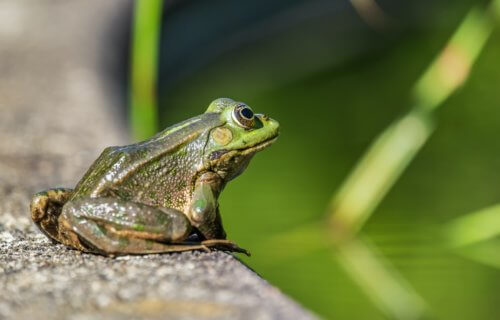ORONO, Maine — If the classic 1980s video game “Frogger” took place on roads in 2020, a new study finds the game would probably be much easier. Researchers from the University of Maine report that far fewer frogs died in vehicle collisions during the early months of the pandemic.
Frogs, as well as other amphibians such as salamanders, migrate each spring. Unfortunately, in many cases migrating means crossing busy streets or highways along the way. Consequently, it’s common for frogs to die under the wheels of cars during this time each year. Traffic levels, however, fell off a cliff in 2020 due to COVID-19, prompting researchers to ponder how the drop-off would affect amphibian mortality.
Greg LeClair, the study’s leader and a University of Maine graduate student, used data he gathered while hosting the annual springtime community science project he founded, called Maine Big Night: Amphibian Migration Monitoring. The project asked a group of volunteers to collect data on frogs and salamanders crossing various Maine roads annually between March 15 to May 15.
Roughly 50 percent fewer Maine frogs died in car accidents in spring 2020 in comparison to 2018, 2019, and 2021. The team also noted similar results for other animal species, suggesting an overall decline in car-related wildlife deaths in 2020.
“Meaningful impact to wildlife is well within reach of most people; you just have to try to not drive on those warm rainy nights in spring,” LeClair says in a university release.
Blame it on the rain
Interestingly, researchers did not see a major decline in car-related deaths among salamanders in 2020. Study authors point to rain levels to explain this salamander-centric discrepancy. Salamanders prefer to travel when it’s dry and usually move less when it rains. On the other hand, frogs are typically indifferent to the weather when it comes to travel. On a statewide scale, more frogs died than salamanders from vehicle accidents between 2018-2021, especially during both warmer and wetter weather.
The Maine Big Night project volunteers also do their part by helping along any frogs and salamanders they come across attempting to cross a street. Since 2018, 426 certified volunteers have inspected 199 sites all over Maine.
“I’ve been moving frogs and salamanders out of roads since I was a kid,” LeClair concludes. “Hopefully this work will assist in the repair of these ecological wounds.”
The study is published in the journal Conservation Science and Practice.
